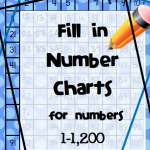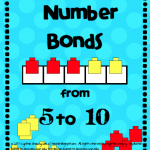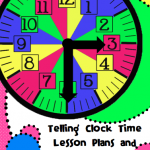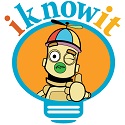Help Your Strugglers with Fraction Number Sense!
Sad but true…Most kids start out struggling with fractions. In real life, we don’t count by fractions and fractions are smaller than our normal counting numbers. Sometimes students get the “top number” and “bottom number” confused. The computer makes fractions with a slash, and teachers tell students to write fractions with a straight line and not a slanted line. There is so much to stumble over as a student!
Could making fractions a part of your daily routine actually help students have a better conceptual understanding?! But of course, darling (with godfather accent)! I mean, after all, when teaching kids to count, we count over and over again EVERY DAY in kindergarten. Students count by 2’s, by 5’s, by 10’s etc. and that is how we teach them to develop number sense. We somehow lose this idea when it comes to fractions. What if we actually gave the same tenacity to counting with fractions?
I am going to show you the tool to use to be able to support your students through scaffolded understanding of counting with fractions. Behold! Fill in Fraction Number Charts! 😉
Students have the opportunity to count by ½, ⅓ , ¼, 1/5, 1/6, ⅛, 1/10, 1/12, and 1/100. There are a variety of number charts included so that students can start out finding patterns when counting by a unit fraction. Then there are three levels of charts when counting by each fraction. Each chart level gets increasingly more difficult as it scaffolds learning. This could also provide differentiated practice for your learners. When students become comfortable counting by unit fractions, they can then try the three levels of simplified charts if the unit fractions can be simplified. Then after daily practice, ta-daaaaaa, better fraction understanding!
Oh, my gosh! What a great idea for morning work! Great way to start the day!
I’ll be back in a few days to show you a special fraction freebie I have in store for you!
Stock Market Game Freebies
If you are playing the stock market game in your classroom, you may have noticed the need for some sheets to go along with the students’ trades. Let me save you the trouble. I have made some here and you are welcome to use them. The first one is a page which is for students to make a simple trade. There are no specific math formulas. This is the one I used with the students first. Click the blue links to download the pages.
This second page I used for a math support because a lot of students were confused with the math calculations for brokerage fees. This page allows for a step by step process to figuring out how to calculate the total cost of a trade.
StockMarketGameJournalPageMath
Next, I made this page for students to sign an agreement that they wouldn’t trade without their partners’ permission. I ended up not using it because I felt that the Journal Pages required students to agree without this additional page, but some of you may find it of use.
I hope I just made your life easier! 🙂
Essential Oils for Classroom Concentration {Win a $25 Credit}
I have an amazing offer for all of my oily teacher friends! Here is a guest post by Stacy from GotOilSupplies.com about how oils can help your children in the classroom or while studying. Got Oil Supplies has some absolutely beautiful pendant necklaces so that your child can be diffusing an oil all day long for maximum learning potential. They also have other amazing products! You must stop by to check them out! AND…you must sign up for a chance to win this $25 store credit from their website!!! 😀
I received some sample roll on bottles for mixing my own oils, and beautiful gold labels from Got Oil Supplies. I love how they have metal roller balls and how they are made with blue glass. I have never bought a bottle with a metal roller ball. They work so smoothly and so much better than plastic roller balls! They also came with these beautiful gold lids which match the gold labels–very classy looking! What’s great is that the price is a great value for the quality of the bottles!
Keep scrolling and reading to enter to win a $25 Got Oil Supplies Credit on the Rafflecopter below.
Essential Oils for School:
Unleash Your Potential with Aromatherapy
Essential oils are highly concentrated oils renowned for their therapeutic and medicinal effects. They’re naturally extracted from plants through a process called distillation. Distillation is done by heating or steaming a part or parts of a plant (such as leaves, flowers, roots, bark, or stems) until the essence is produced. The extracted essential oil retains the plant’s fragrance as well as its other natural properties.
Essential oils can be dispersed through an essential oil diffuser or can simply be applied onto the skin. Due to the high potency of these oils, they can provide healing effects to human body just as much as the plants from which they’re extracted. They’re antiseptic, meaning they’re a good choice against infection. They can also boost the immune system. Furthermore, they can be used to relieve asthma, vertigo, bronchitis, and headaches.
Perks for the Mind
But the most prominent benefit of essential oils lies in their effect on the human mind. The fragrance of essential oils contain true essences of plants; hence, they are best inhaled. They’re known to provide a lot of positive effects to the brain, from stress relief to learning enhancement, depending on the particular oil you are using. Since they are a great aid in brain function, a number of essential oils are found to be helpful for students.
Rosemary
The first essential oil that can aid in learning is Rosemary. Rosemary extract can improve your mood and brain performance. Its fragrance relaxes the brain and can, therefore, help you focus more. This essential oil is best when diffused during study time, whether in school or at home.
Peppermint
One of the biggest struggles during study time is when a lazy mood hits you. Good thing there’s peppermint – an essential oil with an energizing effect. Its minty aroma can make you feel cool and refreshed. Plus, it can also help enhance your focus. Diffusing peppermint essential oil after lunchtime is helpful, most especially when you need to study during that lazy hour.
Cedarwood
Among all essential oils, it’s cedarwood which can deliver the most oxygen to the brain. Oxygen is important to sustain active brain function; thus, the more oxygen gets sent to your brain, the better your mental capacity becomes. This is the reason cedarwood is strongly recommended during exams as it can keep you calm, focused, and alert – all at the same time.
Lemon
A sleepy mind is not a well-functioning mind; so, better use an essential oil freshly extracted from lemon. Lemon’s citrus scent can rejuvenate an otherwise sleepy spirit. It’s also known to provide an energy-boosting fragrance that aids in concentration. As a matter of fact, this particular scent has been found to aid in several cases of learning disabilities. Wake up to a fresh scent by diffusing a lemon essential oil during the morning and start your school day feeling energized.
Sandalwood
Sandalwood can help maintain healthy blood circulation in your brain. It can help enhance your memory and concentration. Its soothing aroma can also save you from the stress and anxiety you usually get the night before your final exams. This essential oil is best inhaled during review time.
Frankincense
Frankincense is commonly diffused to soothe stress and anxiety. Aside from that, it has also been found to calm a preoccupied mind, giving way for mental clarity. Hence, it’s usually best to use this oil when you need to improve your focus and thinking.
Blended Oils
There are also essential oils made from mixed extracts that provide synergistic benefits. Peppermint and wild orange blend is a good example. It combines the refreshing effect of peppermint and the uplifting scent of wild orange in one essential oil. A blend of rosemary, coconut oil, and lemon is also a great choice if you need enhanced focus and memory.
Another famous blend is the vetiver and cedarwood blend. The essence of this blend can both calm your mind and boost your thought processes. This blend is best inhaled during the morning.
Choose Carefully
While there’s no denying that essential oils are beneficial, you shouldn’t just grab the first ones you see. Keep in mind that these oils tend to vary in terms of purity – and of course, you’ll want to go for those made from the real thing, completely devoid of additives.
1000 Follower Giveaway Celebration! Win a $100 TPT Giftcard!
Welcome to the New Year: $75 TPT Gift Card Giveaway!
Fellow teachers, I would like to welcome you to a new school year and say Happy 2018 with an opportunity to win a $75 TPT gift card!!! Details follow.
How You Can Inspire Thankfulness in Your Kids Part 2
Recently, I wrote a post about thankfulness and how to inspire it in your students. You can see this post here. I called this their “Thankfulness Project”. Students were to write down three things they were thankful for each day. After that they were to write down one act of kindness they did each day. After about a month, I took up their journals and read what they had written. This was not for a grade, but I rewarded the students who had done most or all of the work. The parents were aware of the project as well. One of the journals that I read really touched my heart. It is pictured below. Make sure to read the very bottom sentence.
I pulled this child aside after I read her journal and asked her what she meant when she wrote, “This totally made me rethink my whole life”. She explained, “Because I didn’t realize I had so much to be thankful for.” WOW! This speaks volumes.











































